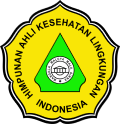FAKTOR- FAKTOR YANG BEHUBUNGAN DENGAN KEJADIAN DBD DI WILAYAH KERJA PUSKESMAS AMBARAWA KABUPATEN PRINGSEWU PROVINSI LAMPUNG 2017
DOI:
https://doi.org/10.26630/rj.v12i1.2750Keywords:
DBD, Aedes aegyptiAbstract
Kejadian DBD di Wilayah Kerja Puskesmas Ambarawa Kabupaten Pringsewu tahun 2017 sebanyak 24 kasus (20,0%), kepadatan jentik 65 rumah (54,2%), suhu seluruh rumah> 30oC yaitu 120 rumah. (100,0%), kelembaban rumah sebagian besar 40-70%, 114 rumah (95.0%), tipe container kuat terbanyak 117 rumah (97.5%), container di dalam rumah sebagian besar 95 rumah ( 79,2%), sebagian besar responden melakukan perilaku PSN yaitu sebanyak 62 orang (51,7%) dan sebagian besar responden memiliki pengetahuan baik yaitu 66 orang (55,0%).
Bagi puskesmas harus lebih berperan aktif dalam pemberantasan penyakit DBD melalui upaya pemberantasan perkembangbiakan nyamuk Aedes aegypti dengan melakukan 3M khususnya pada saluran penampungan air dengan cara menyikat pangkal dan dinding secara teratur.Downloads
Published
How to Cite
Issue
Section
License
Copyright (c) 2021 Ruwa Jurai: Jurnal Kesehatan Lingkungan

This work is licensed under a Creative Commons Attribution-NonCommercial 4.0 International License.

Ruwa Jurai: Jurnal Kesehatan Lingkungan is licensed under a Creative Commons Attribution-NonCommercial 4.0 International License.
Authors who publish with this journal agree to the following terms:
- Authors retain copyright and grant the journal right of first publication with the work simultaneously licensed under a Creative Commons Attribution-Non Commercial License that allows others to share the work with an acknowledgment of the work's authorship and initial publication in this journal.
- Authors are able to enter into separate, additional contractual arrangements for the non-exclusive distribution of the journal's published version of the work (e.g., post it to an institutional repository or publish it in a book), with an acknowledgment of its initial publication in this journal.
- Authors are permitted and encouraged to post their work online (e.g., in institutional repositories or on their website) prior to and during the submission process, as it can lead to productive exchanges, as well as earlier and greater citation of published work.









